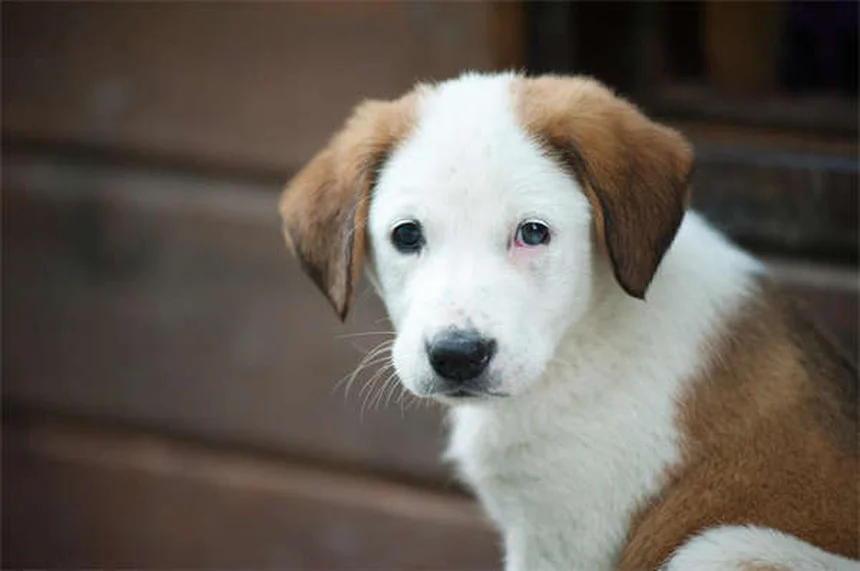Advertisement
How to treat mange in horses? The answer is: With proper veterinary care and targeted treatments! If your horse is constantly scratching and showing signs of skin irritation, they might be suffering from mange - a pesky mite infestation that can make your equine friend miserable. The good news? We've got proven solutions to help your horse feel better fast. From lime sulfur dips to oral medications, we'll walk you through exactly what works to eliminate those irritating mites. Plus, we'll share some insider tips on preventing future outbreaks so you can keep your horse's skin healthy and itch-free!
E.g. :Kiger Mustang: 5 Fascinating Facts About This Rare American Breed
Advertisement
- 1、Understanding Mange in Horses
- 2、Spotting Mange Symptoms
- 3、Why Do Horses Get Mange?
- 4、Getting the Right Diagnosis
- 5、Effective Treatment Options
- 6、Recovery and Prevention
- 7、Common Questions Answered
- 8、Beyond the Basics: More About Mange
- 9、The Economic Impact of Mange
- 10、Mange Myths Debunked
- 11、Special Considerations for Different Horses
- 12、When to Call the Vet Immediately
- 13、FAQs
Understanding Mange in Horses
What Exactly Is This Itchy Problem?
Let me tell you about mange - it's like when you get that one mosquito bite that just won't stop itching, but for horses. Mange happens when tiny mites (think microscopic spiders) decide to throw a party under your horse's skin. Not exactly the kind of guests you want around!
There are several uninvited guests that might show up:
- Sarcoptic mange - the body crasher
- Psoroptic mange - loves hanging out in the mane
- Chorioptic mange - prefers the legs (we call it the "boot lover")
Why Should You Care About Mange?
Now you might be thinking, "It's just some itching, how bad can it be?" Well, let me paint you a picture. Imagine scratching an itch so much that you lose hair, your skin gets thick and crusty, and you can't even enjoy your meals properly. That's what mange does to horses if we don't help them!
| Mite Type | Favorite Hangout Spot | How Common? |
|---|---|---|
| Chorioptic | Legs (especially feathered ones) | Most common |
| Psoroptic | Mane and tail | Moderately common |
| Sarcoptic | All over the body | Rare but serious |
Spotting Mange Symptoms
 Photos provided by pixabay
Photos provided by pixabay
The Obvious Signs You Can't Miss
Your horse will tell you something's wrong - not with words, but with these clear signals:Constant scratching (like they're practicing for a dance competition), hair falling out in patches, and those raised bumps that look like tiny volcanoes on their skin.
Here's something interesting - did you know mange symptoms often get worse in winter? Those mites are smart little buggers that know when your horse's winter coat gives them the perfect hiding spot!
The Not-So-Obvious Symptoms
Sometimes the signs aren't as clear. Your horse might just seem grumpy or lose weight because they're too busy scratching to eat properly. I once knew a horse named Thunder who stopped letting anyone brush him - turns out he had mange and the brushing hurt his irritated skin!
Why Do Horses Get Mange?
The Perfect Storm for Mites
Mites love three things: cool weather, dirty environments, and horses that aren't at their healthiest. It's like how mosquitoes love stagnant water - these pests know exactly where to find their perfect home.
Think about your horse's living situation. Is their bedding clean? How about their pasture? Muddy, wooded areas are basically mite resorts where they can wait for their next horse host.
 Photos provided by pixabay
Photos provided by pixabay
The Obvious Signs You Can't Miss
Here's a question you might be wondering: "If my dog has mange, can my horse catch it?" The answer is... sometimes! While it's not super common, certain mites aren't picky about their hosts. That's why we recommend keeping new animals separated until you're sure they're healthy.
Getting the Right Diagnosis
What Your Vet Will Do
When you take your itchy friend to the vet, they'll probably do a skin scrape. It sounds worse than it is - they just gently collect some skin cells to check under a microscope. I always tell people it's like when you get a small scratch and barely notice it!
Sometimes the vet might need to do a small biopsy. But don't worry - they'll use local anesthesia so your horse won't feel a thing. It's like when you get a small mole removed at the dermatologist.
Information You Should Bring
To help your vet make the right call, come prepared with:
- Your horse's living situation details
- What they've been eating
- Any recent changes in behavior
- Photos of the affected areas (horses aren't great at sitting still for exams!)
Effective Treatment Options
 Photos provided by pixabay
Photos provided by pixabay
The Obvious Signs You Can't Miss
The moment you suspect mange, clipping the hair around affected areas can make a huge difference. It's like clearing the brush around a campsite - you're taking away the mites' hiding places!
Most vets will recommend a lime sulfur dip - sounds fancy but it's basically a medicated bath. You'll need to repeat it every 12 days or so. Pro tip: wear old clothes when applying it because that sulfur smell lingers!
Medication Options
For tougher cases, your vet might prescribe:
- Oral dewormers like ivermectin
- Permethrin sprays (the same stuff in some mosquito repellents)
- In severe cases, antibiotics or steroids
Here's a funny story - one barn I worked with treated their whole herd at once and the horses all ended up with matching "hairstyles" from where they clipped for treatment. They looked like they were part of some strange equine fashion trend!
Recovery and Prevention
Getting Back to Normal
With proper treatment, most horses bounce back in about two weeks. But severe cases might take months - that's why catching it early is so important!
Remember to clean everything - stalls, brushes, even your own clothes. Mites are stubborn and will try to hitch a ride back onto your horse if you give them the chance.
Keeping Mange Away for Good
Prevention is way easier than treatment. Here's my simple checklist:
- Keep up with regular deworming
- Maintain clean living spaces
- Quarantine new horses (think of it as their "getting to know you" period)
- Add skin-healthy supplements to their diet
And here's my favorite prevention tip: give your horse regular grooming sessions. It's like checking your own skin for odd moles - you'll notice any problems early!
Common Questions Answered
Can Humans Get Horse Mange?
This is probably your biggest worry: "Will I start itching too?" Some types can temporarily affect humans, especially sarcoptic mange. But don't panic - just wear gloves and long sleeves when treating your horse, and wash up well afterward.
How Contagious Is It Between Horses?
Very! That's why we recommend treating all horses in close contact. Think of it like when one kid in school gets lice - soon everyone's scratching!
The good news? With proper care and attention, mange is completely manageable. Your horse will be back to their happy, healthy self in no time - maybe with a funny haircut as a temporary souvenir!
Beyond the Basics: More About Mange
The Seasonal Patterns of Mange
You know how some people get seasonal allergies? Well, mange has its own calendar too! Winter months are prime time for chorioptic mange because those leg mites love the warm, moist environment under long winter coats. Meanwhile, psoroptic mange often flares up in spring and fall when temperature changes stress horses' immune systems.
Here's something fascinating - during summer, many mange cases actually improve because sunlight and heat create less favorable conditions for mites. But don't get too excited! Some clever mites will just retreat deeper into skin folds or ear canals, waiting for cooler weather to make their comeback.
Alternative Treatments Worth Considering
While traditional medications work great, some horse owners swear by natural remedies too. Neem oil has shown promise in repelling mites - it's like nature's own pest control! Others use diluted apple cider vinegar rinses, though you'll want to avoid this on broken skin.
One barn manager I know mixes diatomaceous earth into her horses' dust baths. "It's like giving the mites tiny razor blades to crawl through," she told me. Just remember - always check with your vet before trying alternative treatments, especially if your horse has open sores.
The Economic Impact of Mange
How Mange Affects Your Wallet
Ever wonder why vets stress early treatment? Let's break down the numbers:
| Stage of Treatment | Average Cost | Time Investment |
|---|---|---|
| Early Intervention | $100-300 | 2-4 weeks |
| Moderate Cases | $500-800 | 4-8 weeks |
| Severe Cases | $1000+ | Months |
See that jump from early to severe cases? That's why catching mange quickly isn't just better for your horse - it's better for your bank account too! Plus, severe cases often require special supplements and extra farrier visits to manage secondary foot issues.
The Hidden Costs You Might Not Consider
Beyond vet bills, mange can hit your pocketbook in sneaky ways. Show horses might need to skip competitions during treatment. Breeding stallions could lose valuable breeding time. And let's not forget the hours you'll spend scrubbing equipment and treating other herd members!
I once calculated that a single case of untreated mange ended up costing a client over $2,500 in lost training time and treatment. That's enough to buy a really nice saddle - or take a pretty great vacation!
Mange Myths Debunked
"Only Dirty Horses Get Mange"
This is like saying only messy people get colds - completely false! While poor hygiene can increase risk, even the most pampered show horses can pick up mites. Mites don't discriminate - they'll happily move into clean, well-kept coats too.
Think about it: horses at fancy stables often travel more and meet more new horses, potentially increasing exposure. The lesson? Don't blame yourself if your clean horse gets mange - just focus on treatment and prevention.
"You Can See Mites With the Naked Eye"
Nope! These troublemakers are microscopic. What you're probably seeing are the results of their partying - the crusts, scales, and hair loss they leave behind. Trying to spot mites without magnification is like trying to see individual grains of sand from across a pasture.
This myth leads to dangerous delays in treatment. "I didn't see any bugs, so I thought it was just dry skin," one owner told me while her horse suffered for weeks. Remember - when in doubt, get a vet to do proper testing!
Special Considerations for Different Horses
Mange in Foals and Youngsters
Baby horses are especially vulnerable because their immune systems are still developing. The good news? They often respond faster to treatment than adults. The bad news? Many standard medications aren't safe for very young foals.
For foals under 4 months, vets might recommend gentle lime sulfur dips or special diluted formulas. And here's a pro tip: apply petroleum jelly around a foal's eyes before treatment to prevent irritation - those little guys wiggle more than adult horses!
Senior Horses and Mange
Older horses face different challenges. Their slower skin healing means mange can take longer to clear up. Plus, many seniors already have conditions like Cushing's that weaken their defenses against mites.
With older horses, I recommend extra nutritional support during treatment. Adding omega-3 fatty acids can help skin heal faster. And be extra vigilant about weight - senior horses often need calorie boosts when dealing with any health issue.
When to Call the Vet Immediately
Red Flags You Should Never Ignore
Most mange cases can wait for a regular vet visit, but watch for these emergency signs:
- Fever over 101.5°F
- Refusal to eat for more than 12 hours
- Severe swelling in the legs
- Open, weeping sores covering large areas
These symptoms suggest secondary infections or other complications. One client waited too long with a feverish horse and ended up with a $1,200 emergency hospital bill - much more than the $80 office visit would have cost!
Mange vs. Other Skin Conditions
Here's a question that stumps many owners: "How do I know it's mange and not just allergies?" While both cause itching, mange typically shows more localized hair loss and crusting. Allergies often cause hives or generalized itching without the dramatic skin changes.
When Thunder (that grumpy horse I mentioned earlier) first developed symptoms, his owner thought it was a food allergy. Two weeks and $300 in special feed later, a skin scrape revealed the truth - pesky mites had been the culprits all along!
E.g. :Mange in Horses: Signs, Treatment & Prevention | Mad Barn
FAQs
Q: What's the fastest way to treat mange in horses?
A: The quickest solution for mange in horses is typically a lime sulfur dip applied every 12 days. This medicated treatment kills mites on contact and provides immediate relief from itching. Many vets also recommend clipping the hair around affected areas first - this helps the treatment penetrate better and removes the mites' hiding spots. For severe cases, your vet might prescribe oral ivermectin or moxidectin, which start working within 24-48 hours. Remember, early treatment is key! The longer you wait, the more those mites multiply and the harder they are to eliminate completely.
Q: Can I use dog mange treatments on my horse?
A: While some dog mange treatments contain similar active ingredients, you should never use canine products on horses without veterinary approval. Horses process medications differently than dogs, and some dog treatments can be toxic to equines. Instead, ask your vet about horse-specific options like permethrin sprays labeled for equine use. We've seen cases where well-meaning owners used dog shampoos, only to cause severe skin reactions in their horses. Always check with your vet first - they can recommend the safest, most effective treatment for your particular horse's condition.
Q: How long does it take to completely cure mange in horses?
A: Most horses show significant improvement within 10-14 days of starting treatment, but complete recovery typically takes 2-3 weeks. Severe infestations might require 3-4 months of ongoing care. The timeline depends on several factors: how early you caught the mange, which type of mites are involved, and how thoroughly you treat the environment. Don't stop treatment just because the itching decreases - those sneaky mites can survive in small numbers and cause a reinfestation. Your vet will let you know when it's safe to stop based on follow-up skin scrapes.
Q: Is mange in horses contagious to humans?
A: Some types of horse mange, particularly sarcoptic mange, can temporarily affect humans who handle infected horses. You might develop itchy red bumps that resemble mosquito bites, usually on areas that touched the horse. However, these human infections are typically short-lived because the mites can't complete their life cycle on human skin. To protect yourself, wear gloves and long sleeves when treating mange, and wash thoroughly afterward. If you do develop symptoms, they usually resolve within a week without treatment - though your doctor can prescribe creams if the itching becomes bothersome.
Q: What's the best way to prevent mange in horses?
A: Prevention is always better than cure! Our top tips include: 1) Maintain a clean living environment (regular stall cleaning is crucial), 2) Keep up with routine deworming and parasite control, 3) Quarantine new horses for 2-3 weeks before introducing them to your herd, and 4) Add skin-healthy supplements like omega-3 fatty acids to your horse's diet. We also recommend regular grooming sessions - not only do they strengthen your bond with your horse, but they help you spot early signs of skin problems before they become serious mange cases.

